Nagoro – Japan
Nagoro (or Nagoru) is a village located in Iya Valley in Tokushima Prefecture, Japan. The village is located in a remote mountainous area on an island, the island of Shikoku. If you love dolls and ghost stories, this place is for you. Just imagine a ghost town filled with hundreds of life-sized dolls that outnumber humans 100 to 1.
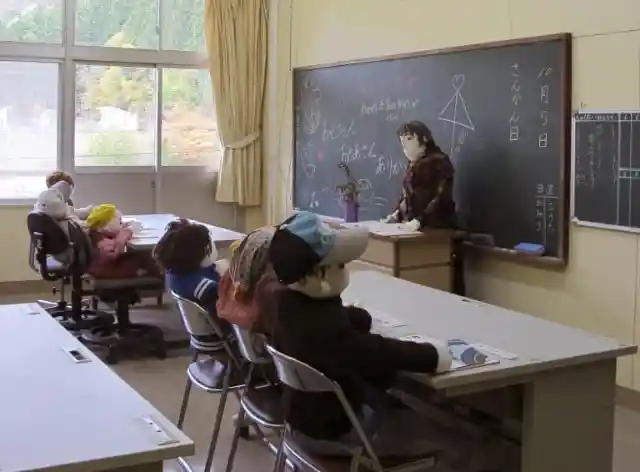

Ayano Tsukimi, a resident of the town whose family left when she was only a child, moved back to the village in the early 2000 and is the creator all of the dolls to resemble former residents who have died or left the village. The first one she did was in her father’s memory, and since then, she’s made over 400 dolls.
Hill Of Crosses – Lithuania
Kryžių kalnas, or the Hill of Crosses, is a site of pilgrimage located approximately 12 km north of the city of Šiauliai, in Lithuania. The exact origin of the practice of leaving crosses on the hill is unknown. However, it is believed that the first crosses were placed on the former Domantai hill fort after the 1831 Uprising. Since then, as a symbol of religious freedom, a lot of Christian pilgrims traveled to this place to place crosses, crucifixes and effigies.
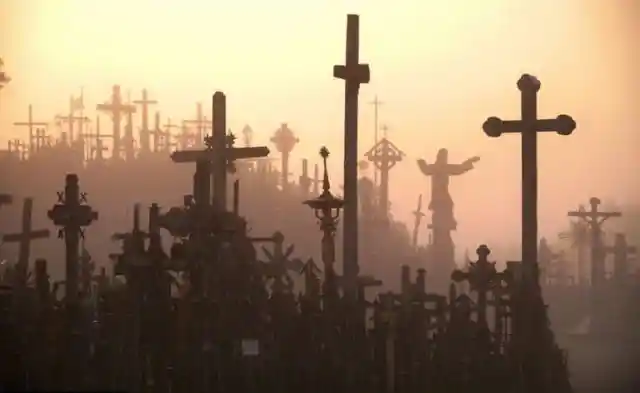
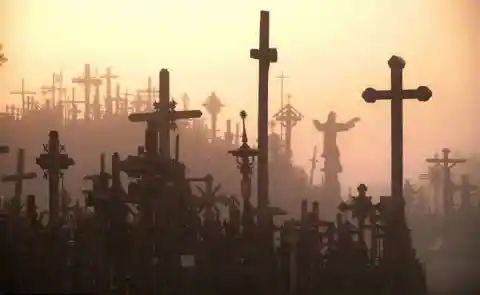
Although the precise number of crosses is still unknown, it is estimated to be around 55,000 (as calculated in 1990) and 100,000 in 2006. As innocent as the practice may seem, imagine the sight of the shadows of 100,000 crosses against the sun. Anyone could have goosebumps in that place!
The Door To Hell – Turmekistan
The Darvaza gas crater, known locally as the “Door to Hell, “is a natural gas field that collapsed into an underground cavern located in the heart of the Karakum Desert in Derweze, Turkmenistan. This large methane reserve was discovered in 1971 by Soviet oil drillers.
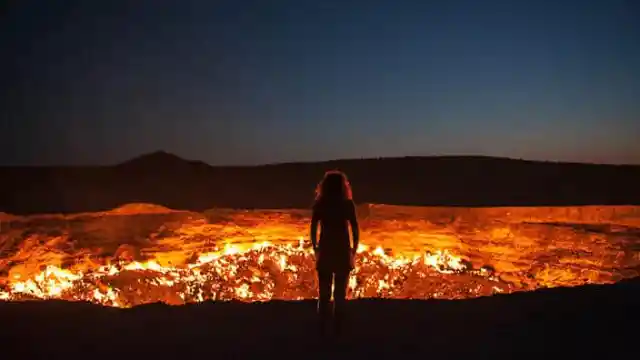
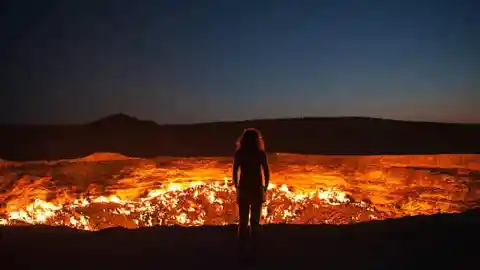
When trying to burn off the gas that was being released, the Soviets ignited the crater on purpose to prevent it from spreading… However, it has been continuously burning since then up to this day, making this crater a very popular tourist attraction.
Haw Par Villa – Singapore
Singapore is host to one of the most unique theme parks in the world. Littered with strange statues, Haw Par Village, located along Pasir Panjang Road, offers several oddities. The park is filled with several statues (its exact number unknown, but it exceeds 1,000) depicting scenes from Chinese mythology, history and various features of Confucianism.
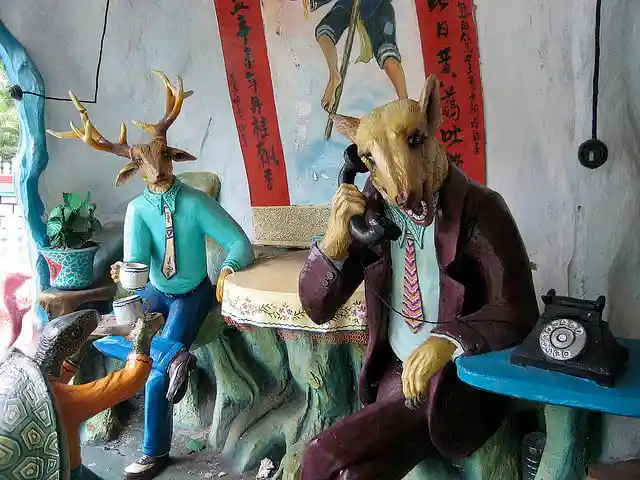

The most popular attraction in Haw Par Villa is called the “Ten Courts of Hell, “a tunnel covered by grey walls, which depicts gruesome scenes of Hell in Chinese mythology and Buddhism. Just a place to go with your family, right? Don’t miss out on the next love story from this particular place.
Christ Of The Abyss – Italy
_Christ of the Abyss_ (in Italian, _Il Cristo degli Abissi_) is a submerged bronze statue of Jesus Christ, located in the Mediterranean Sea, off San Fruttuoso, on the Italian Riviera. In order to honor his friend that drowned in the Italian sea, Duilio Marcante commissioned an artist to create and erect a statue of Christ in the exact same spot where his friend died.
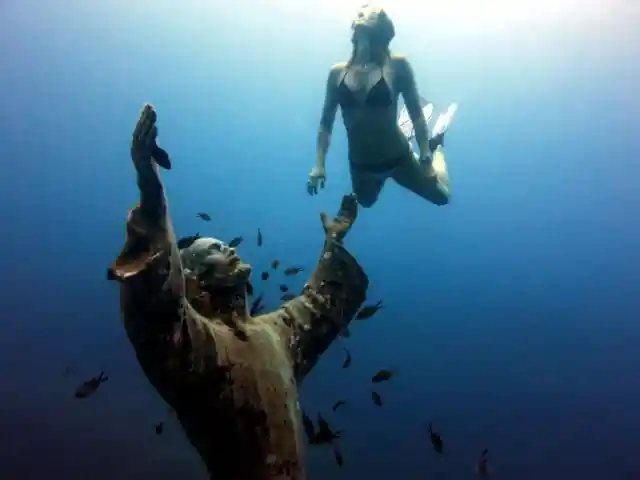
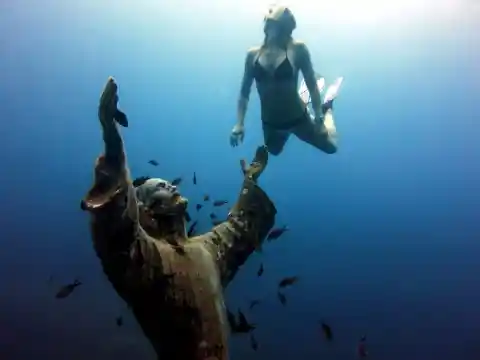
Various similar statues are located in other places of the world in underwater locations, churches and museums. For example, in Grenada and Key Largo, Florida. Even though it was a touching moment with the best intentions, it is also unsettling. Just imagine yourself diving, and suddenly a statue of Christ covered in algae appears in front of you. Yikes!
St. George’s Church – Czech Republic
Located in Luková, the Czech Republic, this church which was also named the “Church of Ghosts” by the locals, is a spooky 14th-century church. After the ceiling collapsed during a funeral in 1968, the church was abandoned for almost 40 years until one artist, Jakub Hadrava, was in charge of bringing it back to life…but how?
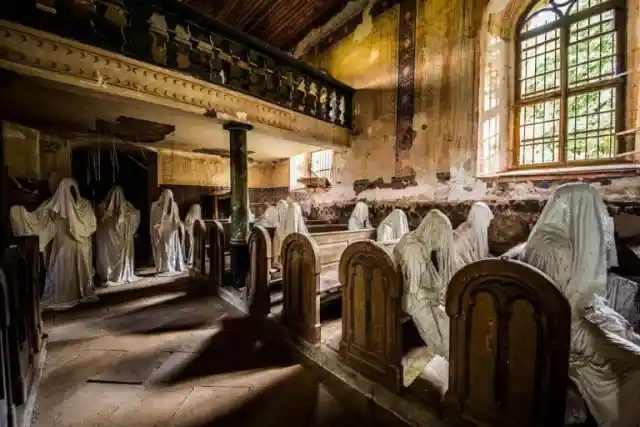
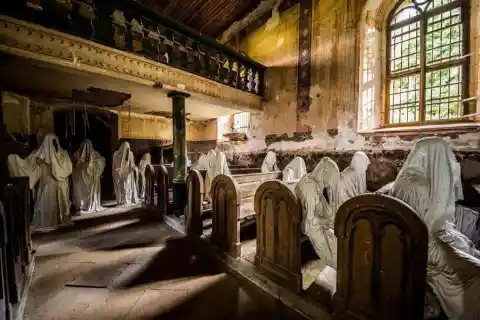
Well, he created ghost-like sculptures that sit silently in the isles of the church. According to him, the statues represent the Sudeten Germans who used to live in this village and often visited the church to pray before WWII. The ghosts are made of plaster and were put in the church in 2014 in the hopes of drawing more tourists to the place.
The Great Blue Hole – Belize
Scuba divers have been attracted to this place and its crystal blue waters ever since it was discovered for the first time. The Great Blue Hole is a giant marine sinkhole near the center of the Lighthouse Reef, which is located 70 km from the mainland and Belize City. This great blue hole, as it is commonly known, was formed during several episodes of Quaternary glaciation.
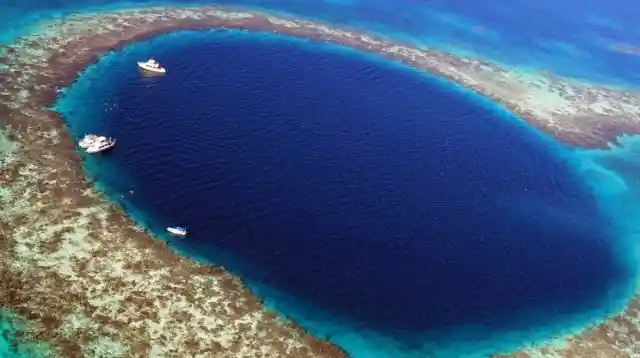
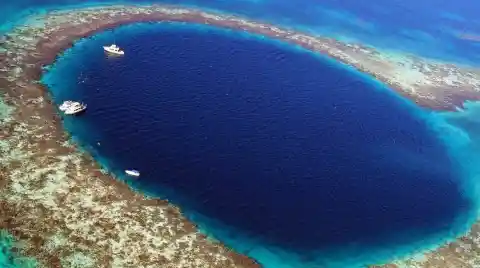
Quaternary glaciation is an alternating series of glacial and interglacial periods during the Quaternary period that began 2.58 million years ago and is ongoing. Although the surface of the hole seems serene, below there is a 400-foot drop into pitch darkness that awaits any unfortunate soul that gets too close to its edges. There are several species of fishes, including the midnight parrotfish and the Caribbean reef shark.
Pripyat – Ukraine
Chernobyl is considered by the whole world as the worst nuclear accident in history, and the residents of the nearby town of Pripyat can attest to it. Pripyat was founded on 4th February 1970 as the ninth nuclear city in the Soviet Union to serve the nearby Chernobyl Nuclear Power Plant. It was named after the nearby Pripyat River. By the time it was evacuated on April 27, 1986, its population was 49,360.
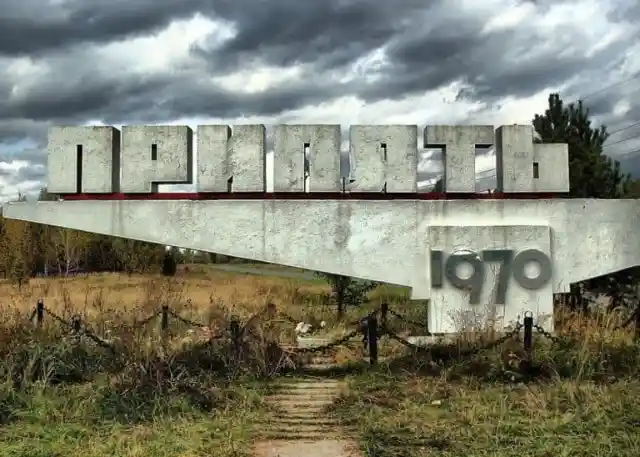
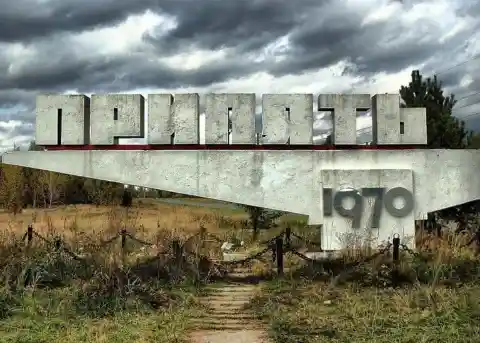
Residents were forced to leave everything behind in the evacuation that followed, and over 30 years later, the town remains virtually frozen in time. In order to replace the city of Pripyat, in 1986, the city of Slavutych was built. One of the most known landmarks often featured in photographs of the city and visible from aerial-imaging websites is the long-abandoned Ferris wheel located in the Pripyat amusement park.
Winchester Mystery House – California
The Winchester Mystery House is a mansion in San Jose, California, which was built in 1884\. Sarah Winchester, the widow of the gun magnate William Wirt Winchester who died of tuberculosis in 1881, believed she was being haunted by the spirits of those who had been killed with Winchester rifles.
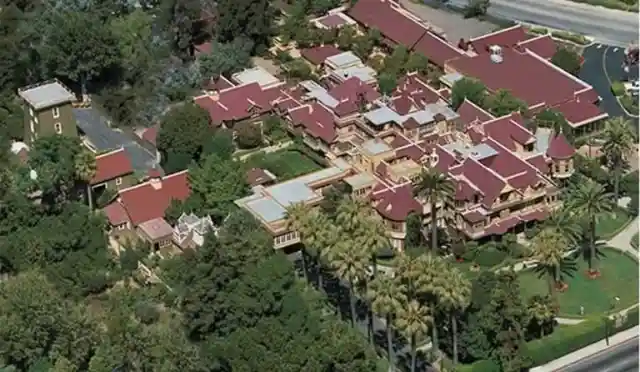
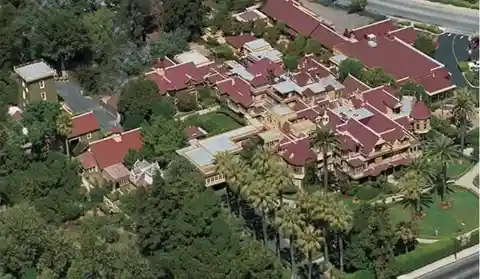
In consequence, she built a seven-story home that features dead-end stairways and doors that go nowhere, designed to confuse ghosts. Winchester didn’t stop building onto the house until she passed away on September 5, 1922. Under Winchester’s day-to-day guidance, the construction of the mansion proceeded around the clock, by some accounts, without interruption until her death.
Taylor Glacier – Antarctica
The Taylor Glacier is an Antarctic glacier that boasts almost 54 kilometers long and which flows from the plateau of Victoria Land into the western end of Taylor Valley, north of the Kukri Hills, south of the Asgard Range. The glacier was discovered by a British expedition, known as the British National Antarctic Expedition, between 1901 and 1904 and was thought to be part of the Ferrar Glacier.
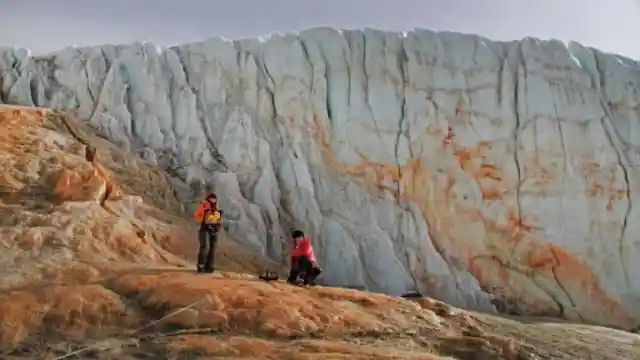
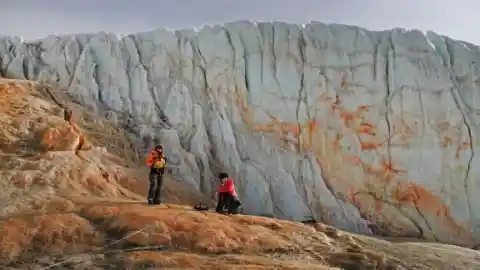
The flow of red saltwater below the ice, known as “Blood Falls, “is caused by the high levels of iron in the lake that runs there. Still, even when you know the science behind such a phenomenon, a gush of bright red liquid isn’t exactly the most comforting sight on an arctic hike. The reddish deposit was found in 1911 by the Australian geologist Griffith Taylor, who first explored the valley that bears his name.
Beelitz-Heilstätten Hospital – Germany
We know that abandoned hospitals are always on the top of the most creepy lists, but the Beelitz-Heilstätten Hospital has both the looks and the history of classifying it as absolutely terrifying. Built in 1898, this disused hospital complex of approximately 60 buildings is located in the district of Beelitz Heilstatten. Between 1898 and 1930, the complex served as a sanatorium for lung diseases, generally housing those with then-fatal conditions such as tuberculosis.
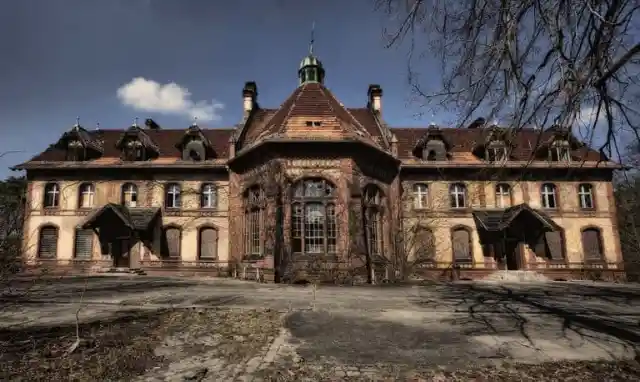
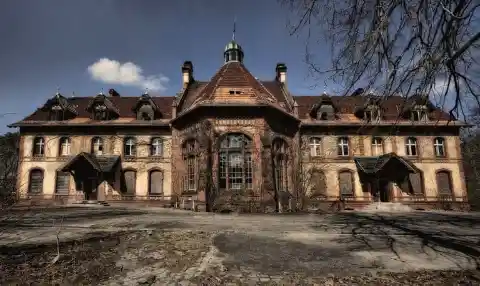
After having being used as a sanatorium, a Nazi treatment center and a Soviet military hospital, the complex now sits abandoned and its halls occupied by decay and ghosts. As none of the complexes was guarded until 2015, it was a popular place for urban exploration, drinking teenagers, and people looking to give themselves a good scare.
Poveglia – Italy
Poveglia is a small island located between Venice and Lido in the Venetian Lagoon, northern Italy, and which is divided into two separate parts by a small canal. Since 1776, the island was used as a quarantine station for those suffering the plague and other diseases for more than 100 years, and later as a mental hospital.
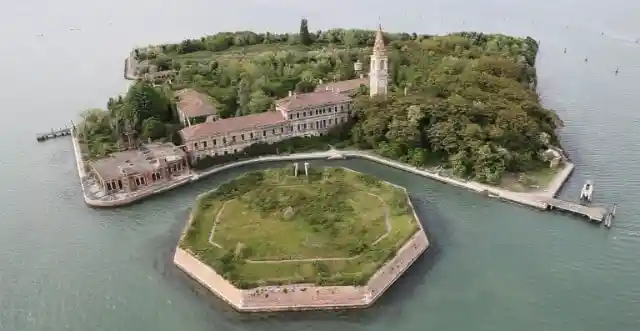
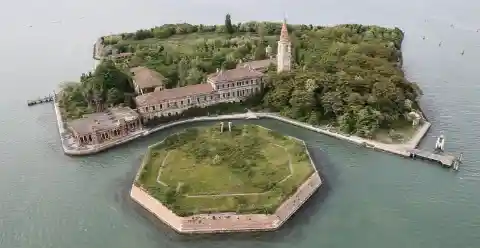
In 1793, two ships brought several cases of the plague, and, as a consequence, the island was transformed into a temporary confinement station for the ill. In the 20th century, the island was again used as a quarantine station, but in 1922 the existing buildings were converted into an asylum for the mentally ill and for long-term care. It’s believed that over 100,000 people perished on Poveglia, and it’s now considered one of the world’s most haunted locations. Not surprising, given its history.
Gomantong Caves – Malaysia
If you are an adventure lover and do not run at the sight of insects, this cave in Malaysia will be your next destination. It is said that around two million bats and cockroaches roam the darkness of this cave. And, if that wasn’t enough, there are also snakes, scorpions, crabs and even giant centipedes! The bat population is dominated by a colony of the wrinkle-lipped free-tailed bat, Chaerephon plicatus, whose nightly exodus is a popular tourist attraction.
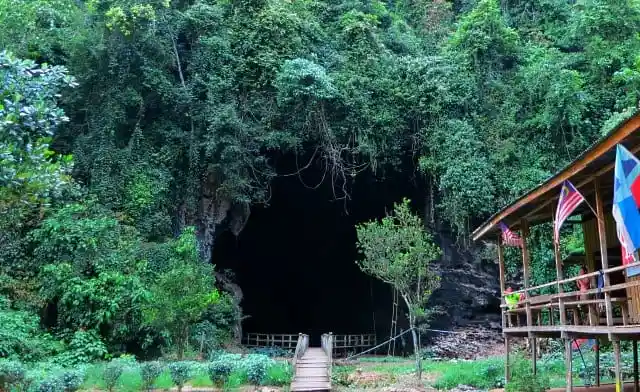
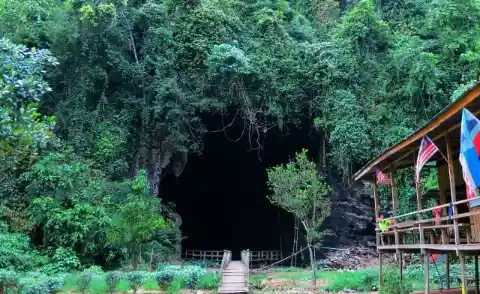
The main cave system is divided into two parts: the more accessible Simud Hitam (Black Cave) and the larger Simud Putih (White Cave) which lies above. These names refer to the type of nests that are produced by swiftlets in each cave. The Black Cave is open to the general public, and its ceiling can reach between 40 to 60 meters high.
Hanging Coffins of Sagada – Philippines
Cemeteries exist all over the world, but did you know that the people of Sagada hang the coffins of their loved ones on the side of a cliff? It has been done for more than one hundred years. Each coffin contains the body of the person who crafted it. The people of Sagada follow a unique burial ritual. The elderly carve their own coffins out of hollowed logs. If they are too weak or ill, their families prepare their coffins instead.
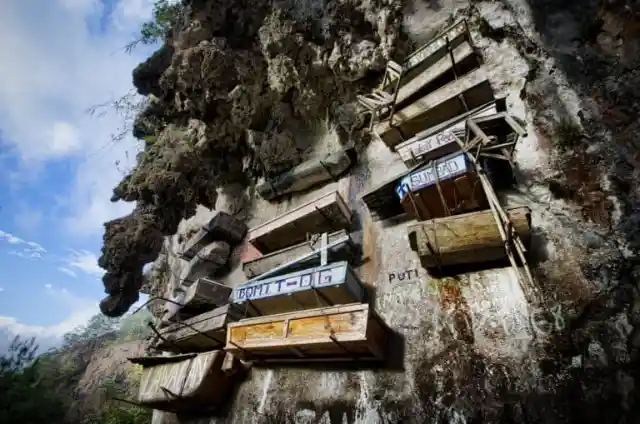
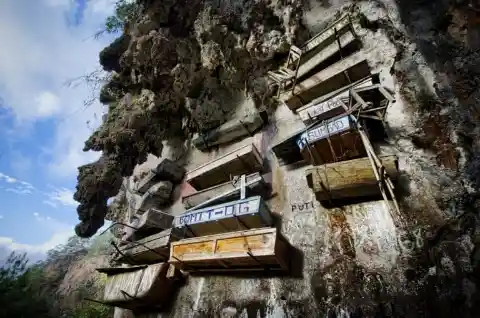
Instead of being placed into the ground, the coffins are hung either inside the caves or on the face of the cliffs, near the hanging coffins of their ancestors. The reason the coffins were hung was due to the belief that the higher the dead were placed, the greater the chance of their spirits reaching a higher nature in the afterlife.
North Yungas Road – Bolivia
The Death Road is one of the ways to travel between La Paz and Coroico in Bolivia. The road connects the Bolivian capital of La Paz with the low-lying region of Yungas in the Amazonian rainforest. In order to do so, the road must traverse the mighty Cordillera Oriental mountain chain. By some estimates, between 200 and 300 people die a year on the road.
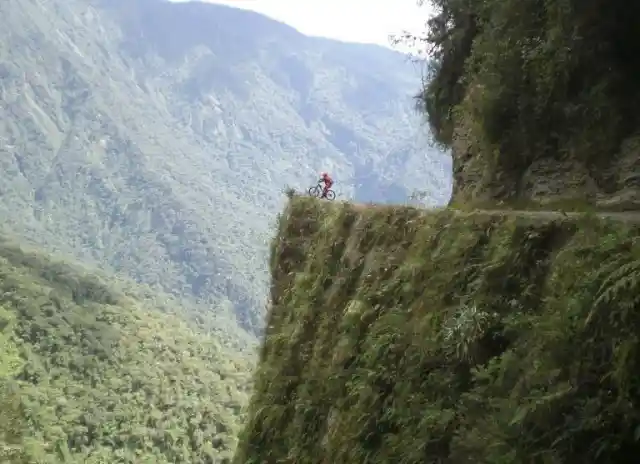
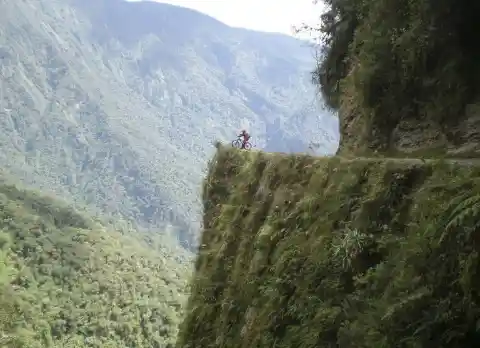
One side of the road is solid rock; the other falls off into a 600-meter abyss. Most of the road is only 3.5 meters wide, and some sections are unpaved, without guardrails. It is a single-lane road located 15,000 feet above the Amazonian rainforest. If that wasn’t enough, the road is full of twists and turns. Be careful of the speed limit!
Centralia – Pennsylvania
In 1962 a mine fire turned the rich coal mines of Centralia and its surrounding town into a ghost city. National awareness of Centralia’s unending environmental catastrophe came in 1981 when a 12-year-old boy fell into a 150-foot hole that suddenly appeared in his back yard. Most residents were relocated in 1984, and in 1992 the entire town was condemned.
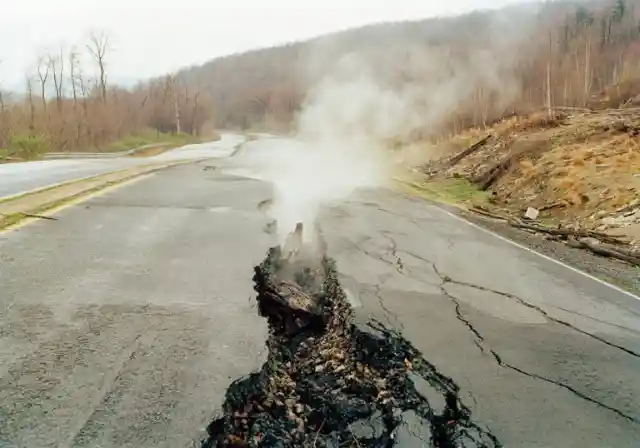
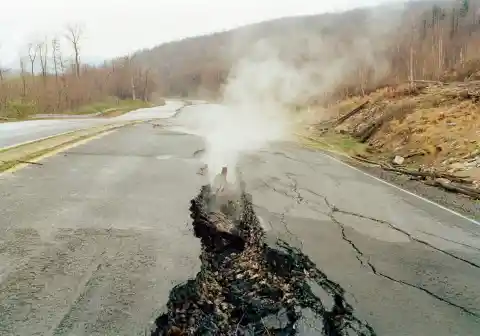
Nowadays, the population of Centralia is below ten, and the first beneath the town is expected to burn another 250 years. Centralia’s last residents seemed to continue life as normal despite being surrounded on all sides by smoking rubble. You have time to plan your visit! Although, be advised that police have been running off visitors recently.
Veijo Rönkkönen Sculpture Garden – Finland
The Veijo Rönkkönen garden in Finland portrays more than 500 figures of its creator, the Finnish artist Veijo Rönkkönnen. Over the course of almost 50 years, from the early 1960s until his death in 2010, Finnish-born artist Veijo Rönkkönen constructed nearly 500 concrete figures and displayed them on the grounds of the home he’d lived in since birth.
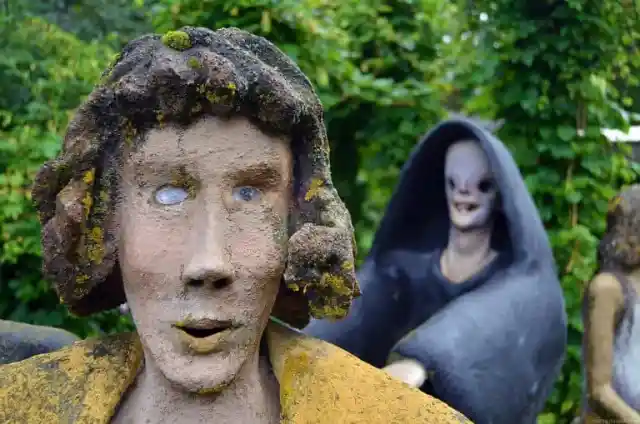
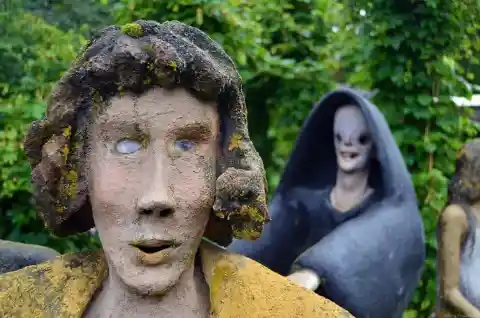
What is weird about these sculptures is that the ones that are smiling have been sculpted with real human teeth. The sculptures are not particularly lifelike but rather possess an otherworldly and at times downright sinister quality, with blank, sunken eyes, skeletal body proportions, ghoulish grins, and, in some cases. Non-human figures include large treelike structures with cone-shaped branches.
Snake Island – Brazil
Off the shore of Brazil, almost 93 miles away from downtown São Paulo, is _Ilha da Queimada Grande,_ also known as“Snake Island.”The island is untouched by human developers, and for a very good reason. It is estimated that on the island, there is an average of between 1 to 5 poisonous spiders per square meter, and we are totally grateful that it is closed to the public!
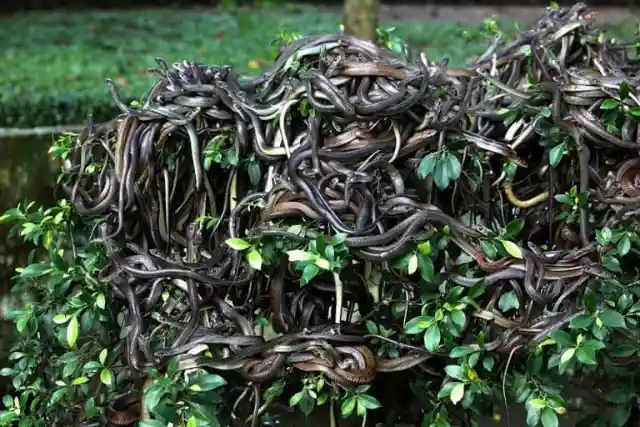

Locals in the coastal towns near Queimada Grande love to recount two gruesome tales of death on Snake Island. In one, a fisherman unwittingly wanders onto the island to pick bananas. Naturally, he is bitten and dies by the poison on his boat. The other story is of the final lighthouse operator and his family. One night, a handful of snakes enter through a window and attack the man, his wife, and their three children. In a desperate gambit to escape, they flee towards their boat, but they are bitten by snakes on branches overhead.
The Island of Dolls – Mexico
Julian Santa Barrera started hanging dolls around his island when he found the body of a young girl in a nearby canal. He did this in order to ward off her spirit. Don Julian Santana began collecting lost dolls from the canals and the trash near his island home. Don Julian also kept his cabin filled with dolls, which he dressed in headdresses, sunglasses, and other accouterments. This practice continued until 2001 when Barrera was found dead in the same spot as the girl.
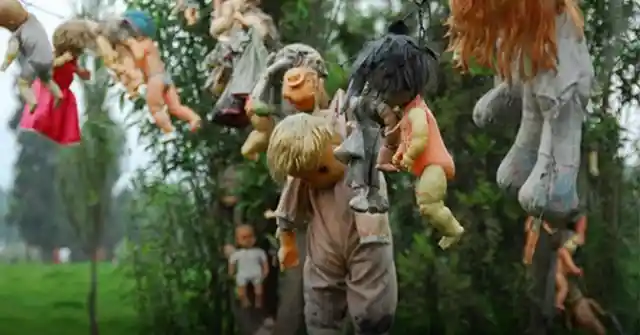
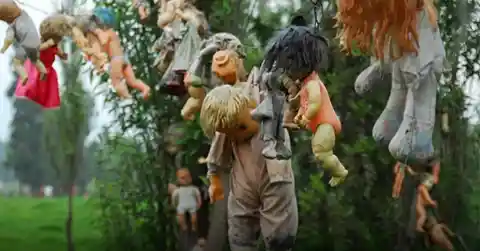
Despite the fact that most people found the isle frightening, Don Julian saw the dolls as beautiful protectors, and he welcomed visitors, whom he would show around, charging a small fee for taking photos. Today, La Isla de las Muñecas features hundreds of Barrera’s decayed, hanging dolls, and for the right price, the local fisherman will even take you to see the island for yourself. Some visitors say you can even hear the dolls whispering to you as you pass!
Silfra Fissure – Iceland
In Iceland’s Thingvellir National Park, you can snorkel in near-freezing waters (2-3°C) between two continental plates. The rift sits in the gap between the North American and Eurasian continental plates, where an imperfect seam allows explorers into the watery depths an opportunity to dive towards the center of the Earth.
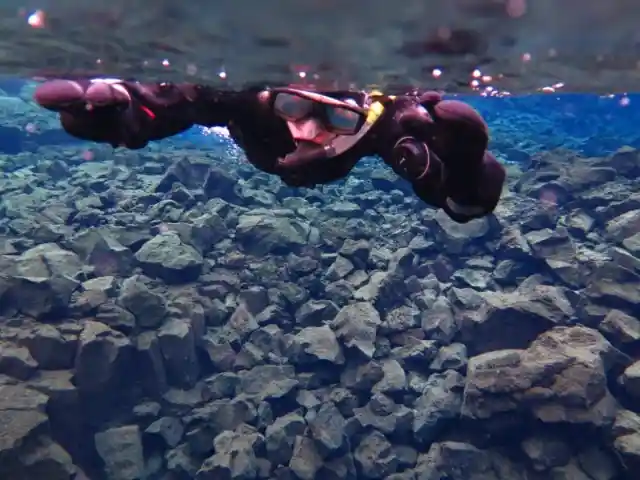
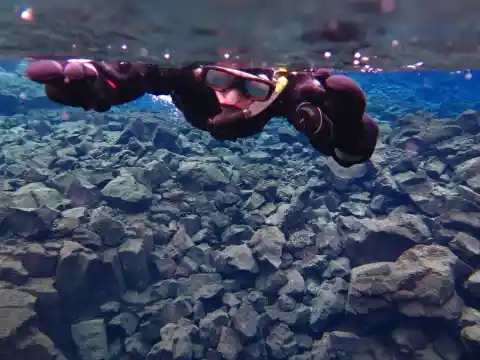
The fissure’s crystal clear water is made of glacier meltwater filtered through the volcanic rocks over hundreds of years. You may see over more than 150 meters! Even the waters in Silfra are unique. Since no rivers flow into Þingvallavatn Lake, the water actually gets slowly extruded through the porous tectonic rock beneath the water’s surface. This process filters the water and not only accounts for the lake’s incredible clarity but also makes the lake mostly safe to drink.
Dog Sledding – Canada
Today, dog sledding is mostly a recreational activity rather than necessary transportation, but it’s an amazing and fun way to experience Canada’s stunning landscape and part of its past. In the open tundra of Canada, miles away from any civilization, you can get into a sled pulled by powerful Husky dogs for an incredible experience. The dogs will travel at full speed while crossing the white Arctic tundra, with the cold wind on your face.
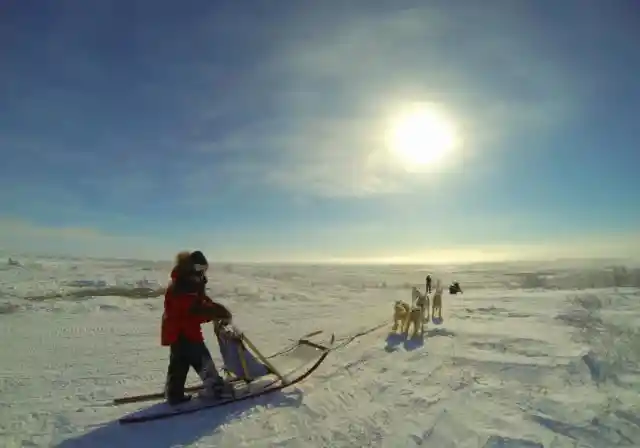
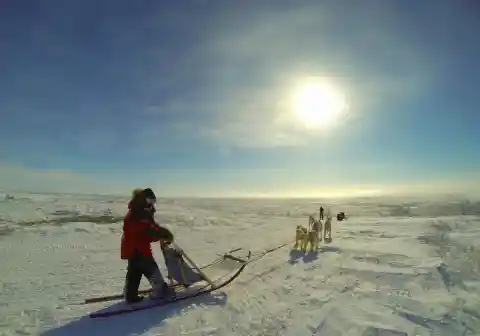
There is something extra special about dog sledding in Canada’s Arctic. In the Yukon, you’ll find tours near the capital of Whitehorse as well as smaller towns, including Dawson City, Haines Junction, and Marsh Lake. That is not all, as at night you may also be able to see the Northern Lights. Just be sure that you pack some coats!
Sky Plank – China
Not everyone has the same idea of what fun means. For some, it means edging along with a series of narrow wooden planks balanced high above a certain death drop over the side of a mountain. Mount Hua is one of China’s five sacred mountains and is home to Daoist Temples which are significant places of worship in Taoism, the religious and philosophical Chinese tradition.
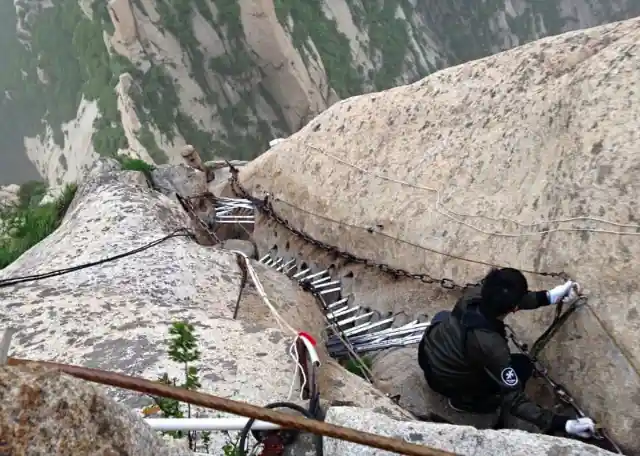
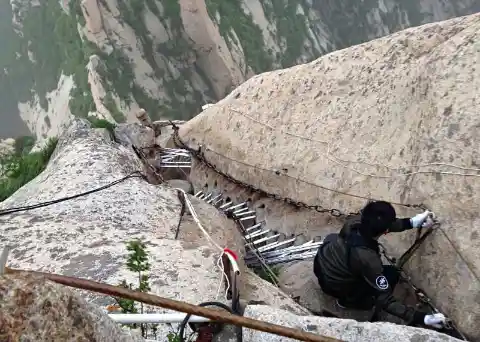
This climb in the mountain of Huashan is considered the world’s most dangerous hike; The Sky Plank Walk is definitely the star attraction in these peaks that draws thousands of visitors per week. The hiking route has become famously dubbed the “most dangerous in the world” and is known as the “most precipitous mountain under heaven” online due to the narrow nature of the boardwalks – and the fact that while protection and harnesses are strongly advised, it is not essential to wear safety gear on the hike.
Shark Cage Diving – South Africa
In Mossel Bay, South Africa, shark cage divings are one of the most featured activities pursued by tourists. A typical shark cage diving excursion takes about three to five hours. You hop on the boat and are hustled away to prime shark territory near Dyer Island and Geyser Rock.
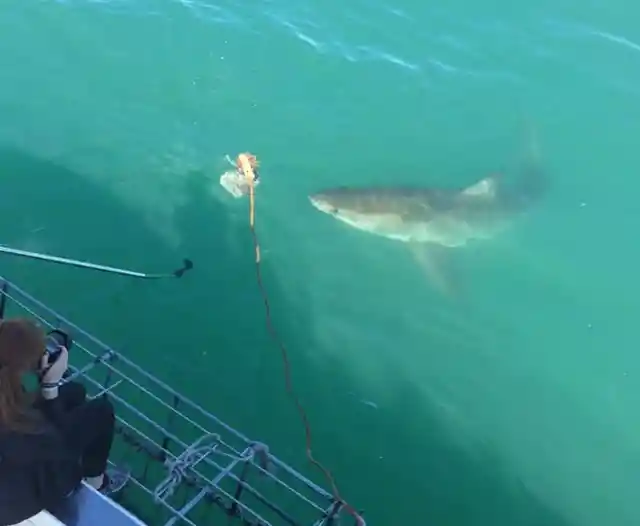
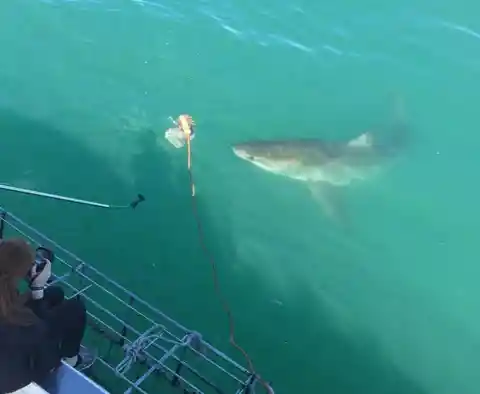
You go outside of a boat, step into a cage, and then the crew of the boat throws fish heads and gust into the water. After a short wait, they lower you into the water, and you will be in sight of a shark. Once there are a good number of beautiful animals swimming around, you jump into the cage, which is attached to the boat, and hold your breath. There's no breathing equipment used here, so your sighting of the shark is contingent on how long you can hold your breath underwater.
Bungee Jumping – Nepal
In Nepal, there is a lot more to do than just climbing Mount Everest. If you stay in the Last Resort facility or take a day trip from Kathmandu, you may go bungee jumping in Nepal! Adrenaline junkies have long gone to Nepal to experience the breathtaking and heart-pounding thrill of plunging off a suspension bridge above the river canyon. If you’ve got the courage, it’s definitely something that will stay with you forever.
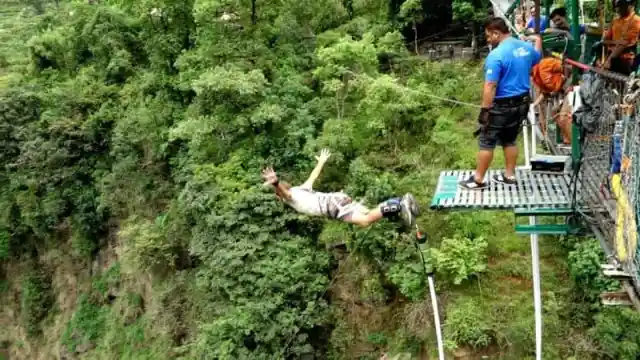
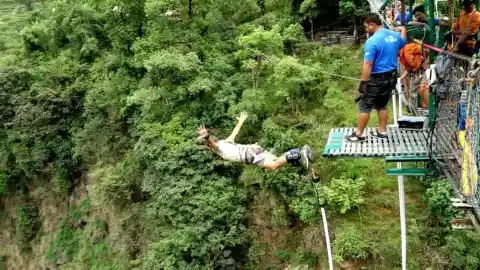
Bungee jumping in Nepal is one of the things that you will tick off your bucket list, as it is more affordable than in other parts of the world, and the staff does not mess around with safety measures. The bungee jump in Tatopani was designed by one of New Zealand’s leading bungee consultants and is operated by some of the most experienced jump masters in the business. The jump takes place from a 166 m wide steel suspension bridge that joins two sides of a deep valley over the raging Bhote Koshi River.
Zipline Superman Style – Philippines
Tree Top Adventures is an adventure park where you can zip-line like Superman or the Silver Surfer 70 feet off the ground. The Superman ride will surely zip you so fast you feel like you’re flying! While the set-up may look super relaxed, these guys test out your harness on the platform to make sure it’s secure and follow all proper safety requirements like giving you a helmet and making sure you’re wearing secure footwear.
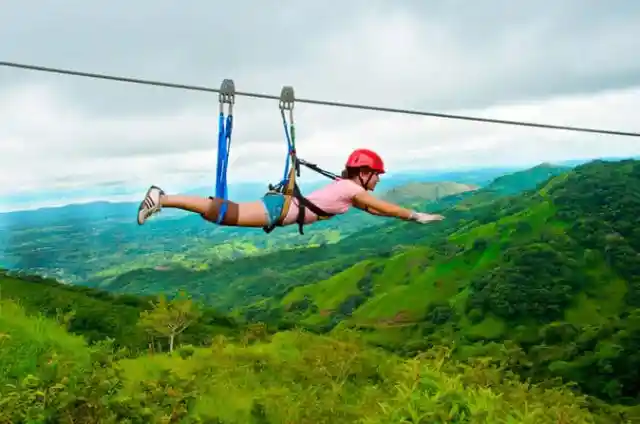
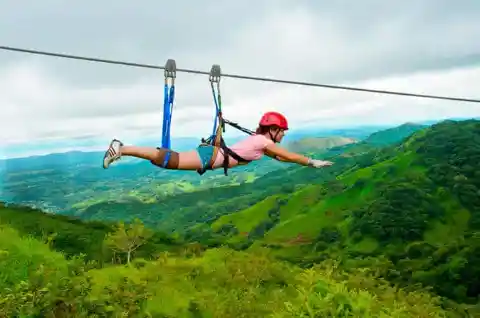
There are also other experiences like the Tree Drop Adventure, where you free fall (with safety gear) off the top of a 60-foot tree. After that, you may even go to enjoy a canopy ride or a trekking adventure. While I’ve zip-lined in beautiful destinations like Hawaii and Thailand, this zip line is hands down the most picturesque I’ve ever seen. The experience of island-to-island ziplining where you can fly Superman-style across a spectacular coconut palm-fringed beach is priceless!
Canyoning – Vietnam
If you are afraid of water, one of the best ways to overcome that fear is to go canyoning. In Vietnam, Dalat is one of the best places to go canyoning. Dalat in the Central Highlands of Vietnam is one of the major tourist destinations for locals in the entire country, and the absolute best thing to do in the town is go canyoning in Dalat.
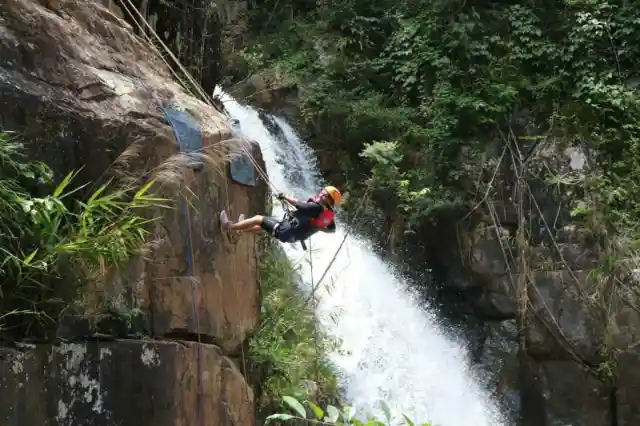
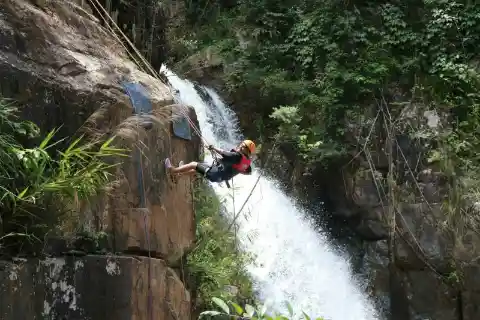
Canyoning is traveling through canyons using different ways of getting around – abseiling down waterfalls, floating and swimming down the river, climbing or cliff jumping. The great thing about canyoning is that you don’t need much experience, as you are guided through every step, you just need a little bit of courage.
Mt. Elbrus – Russia
A unique and unforgettable climbing experience is climbing the 5642 meters of Mt. Elbrus in Europe. Not only do you need a good fitness level but also a high mountain experience. Due to its location, Elbrus is considered to be more difficult to climb than some higher peaks located closer to the equator. Weather conditions here are rough and unpredictable; strong wind, snow, hail and rain all this can happen in one day.
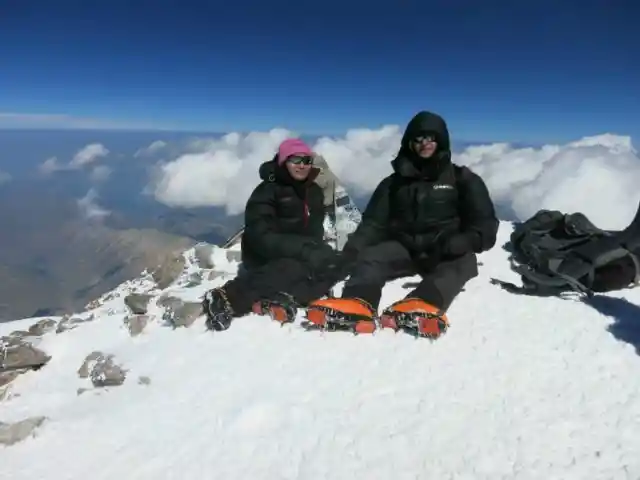
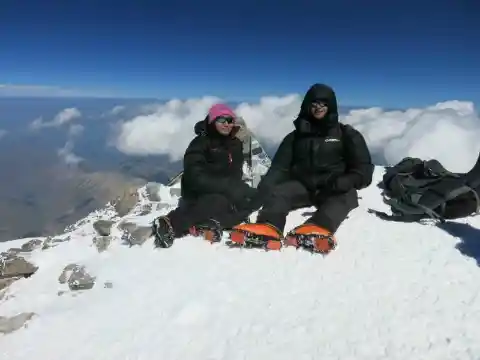
If you are not up to the challenge of climbing Mt. Elbrus, it has a cable car and chair lift to take riders a couple of miles up the mountain. There are plenty of smaller day hikes around the area as well. If you’re keener on going down the mountain rather than up it, Elbrus is also home to a popular ski resort. And if you really want to get down the mountain fast, there is also the annual Elbrus race, where participants vie for the fastest downhill time.
Paragliding – New Zealand
Paragliding is the recreational and competitive adventure sport of flying paragliders: lightweight, free-flying, foot-launched glider aircraft with no rigid primary structure. The pilot sits in a harness suspended below a fabric wing and which shape is maintained by the suspension lines, the pressure of air that enter the vents in the front of the wing, and the aerodynamic forces of the air flowing over the outside.
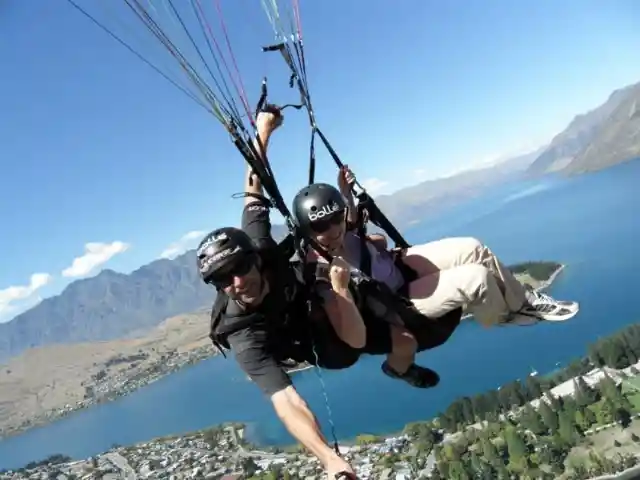
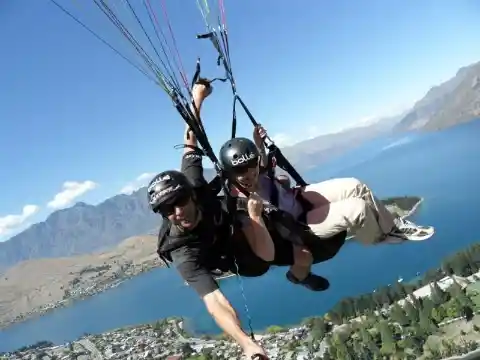
Queenstown is considered the adventure capital of the world, which features plenty of famous adrenaline activities. One of these activities is paragliding over Lake Wakatipu. The trip down is only about 10 minutes long, but you will be able to soar all over Queenstown. Also, paragliding is a soft-adrenaline activity so that anyone can do it!
El Caminito del Rey – Spain
In 1901, a pathway was built across the El Chorro gorge to provide easier access to the hydroelectric plants at the nearby falls. It took four years to finish. Recently renovated, it was once considered one of the most dangerous pathways in the world, regularly drawing visitors hoping to cross it. It is located in Spain and is known as El Caminito del Rey. It is a 7 km narrow walkway through two 100 feet tall gorges in the Andalusian mountains.
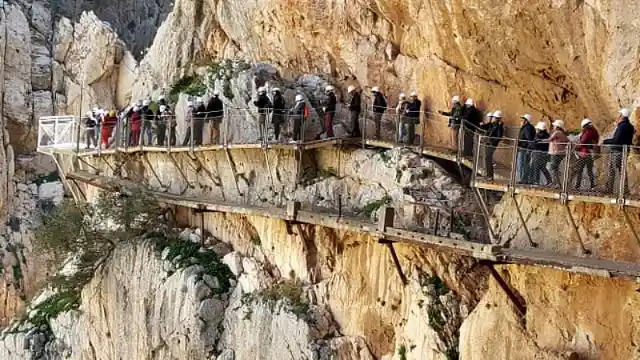
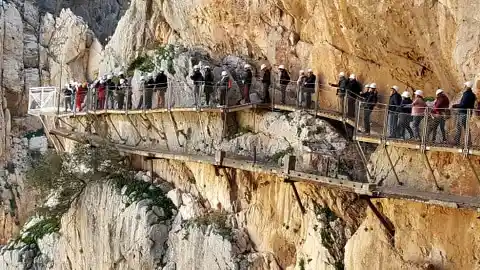
This is the most incredible walkway, and the views soon overtake any anxiety. A two-hour guided or solo hike through majestic gorges and an enchanting forest creates a thrilling experience where you quite literally are walking on the edge. In March 2014, restoration works were started jointly by the regional government of Andalucia and the local government of Malaga. The Caminito del Rey is now fully renovated and safe to walk on, but your time slot to walk the length must be pre-booked on the attraction website.
Volcano Boarding – Nicaragua
Volcano Boarding is a pretty new activity that is being done in Nicaragua. You have to make a trip from Leon to Cerro Negro, which is a young active cinder volcano. You sit in a piece of wood and fly down the side of the volcano. There are two different ways to go volcano boarding. You can stand up like on a snowboard, or you can sit down like on a sled.
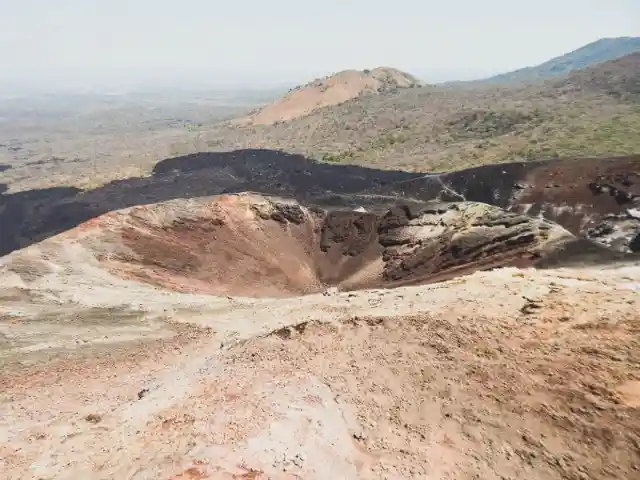
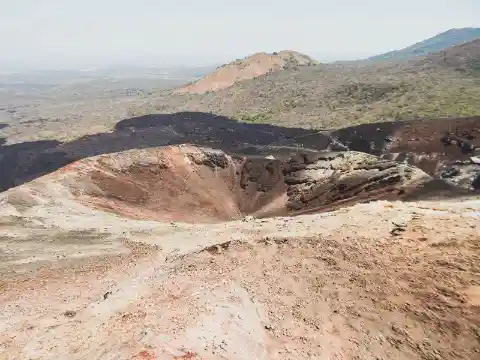
Once you get to the top, there is a short safety briefing and instructions: keep your feet on the ground next to the board, hold the handle vertically, lean back farther to go faster, and most importantly, if you fall off, cover your face and roll. The volcano boards have a rope in front for your hands as you lean back for maximum speed. You can’t really control your direction with the rope, though; it’s only for stability. The bottom of the wooden sled is covered with a thin layer of metal.